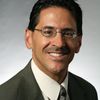The city of Las Vegas can certainly keep you up all night! That's where the 4th annual Human Resource Executive Health & Benefits Leadership Conference was held a few weeks ago. It wasn't Las Vegas, though, that kept many of the speakers up, but rather the many challenges and opportunities present in the employee benefits landscape.
One general session entitled "Consumerism vs. Paternalism: What's the Future of Benefits Design?" was a panel session moderated by Jennifer Benz, CEO & Founder of Benz Communications, and a member of WorldatWork's Benefits Advisory Council. Panelists included Bob Ihrie, Senior VP of Benefits & Compensation, Lowe's Cos.; Brian Marcotte, President and CEO atNational Business Group on Health (NBGH); Andy Rosa, Director of Human Resources, Benefits and Workforce Health at AmeriGas; and Jennifer Weinstein, Director of Health & Benefits Strategy,McKesson.
Each panelist spoke about the impact of their organizational culture, values, business strategy, cost structures, and workforce demographics on their benefits programs design. Representative of a variety of industries and company perspectives, it was clear to see how each was unique in its approach to both benefits design and communications; however, it was, also, clear how each struggled with balancing the old days of "paternalism" with the newer days of "consumerism." It was evident that each was attempting to effectively address the needs of its workforce with the proper balance to achieve better business outcomes for their respective companies.
While each panelist offered different approaches to benefits design in achieving their business objectives, there were several common threads.
•There is a need to help employees navigate their benefits choices. In terms of health care, because health care is so complicated, the decision-making process is very complex. The high stress associated with health care clouds the decision-making process.
•The "Employee Experience" is key, and this means addressing how to engage employees better and knowing when to use "high-tech" vs. "high-touch" approaches.
•Companies need to be more transparent about why they are offering what they are providing, why they might be making changes, and assist employees to better understand their benefits choices. I
•Financial Wellness initiatives will continue to be a focus of organizations.
•There will continue to be a transition to overall well-being and helping employees meet their personal health & financial goals.
In one of the final general sessions held, there was a panel of experts that discussed the benefits challenges of today, and the opportunities for tomorrow. Moderated by Jennifer Benz, the panelists included Ron Leopold, National Practice Leader of Health Outcomes, WillisTowersWatson, Jessica Bell van der Wal, Head of User Growth at Castlight Health, Chris McSwain, McSwain Consulting (Chris was formerly head of benefits at Walmart and a prior WorldatWork Benefits Advsiory Council member and Conference speaker); Nate Randall, President & Founder of Ursa Major Consulting (formerly Sr. Manager, Global Benefits and Employee Experience at Tesla Motors).
In the discussion each panelist was asked, "What will benefits professionals be talking about next year at this same time?"
Here is a brief list of what was shared:
•Benefits practitioners will continue to explore a holistic approach to well-being, as organizations continue to help employees take better control over their health, wealth & performance.
•The lack of employee financial well-being is creating barriers to employee engagement. Benefits professionals will seek innovative ways to get employees' attention in order to address their day-to-day needs.
•The use of data and predictive analytics will grow to better connect benefits to business performance and help validate the business value of investments in human capital.
•The plight of the low-wage worker will be addressed.
•Rise of mobile apps will accelerate.
•To differentiate themselves, companies will build the ideal "Employee Experience " and tie that to the Employee Value Proposition (EVP) and overall organizational brand.
•Companies will take better control of their service partners, focusing on quality outcomes and performance.
•With the saturation of wellness vendors, there will be a move to integration to one platform; any future platforms will need to be easy for employees to navigate and they will need to work more like a consumer-driven product (especially if organizations desire employees to be real consumers!)
•There will be a movement towards Amazon-style benefits, and more personalized messaging; individualized messages relevant to each employee, leveraging both technology and data to achieve this.
The old definition of paternalism was all about employers taking care of their employees. Although most successful companies still wish to take care of their workforce, according to one of the panelists, the new definition is "Paternalism to drive good consumerism." Years ago, it was about the benefits offerings; today, it is about providing the direction and guidance to make sure employees make good decisions.
